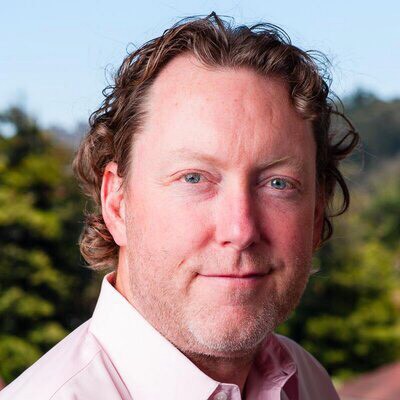When you have the opportunity to ask some of the most interesting people in the world about their lives, sometimes the most fascinating answers come from the simplest questions. The Thrive Questionnaire is an ongoing series that gives an intimate look inside the lives of some of the world’s most successful people.
Thrive Global: What’s the first thing you do when you get out of bed?
Mike Cagney: I try to ride my bike as much as I can, so usually I get my gear and hit the road for a ride before work.
TG: What gives you energy?
MC: Not to double down on one answer, but getting a ride done in the pre-dawn is a phenomenal way to kick-start your day.
TG: What’s your secret life hack?
MC: I swapped out running for bicycling and weights. When you are a man over 40 and you run, your body releases cortisol. That breaks down your lean muscles and deposits fat in your mid section. I used to run all the time, and that was happening to me. So I switched to cycling with a carb breakfast after, and weights. Lost 25 pounds in two months.
TG: Name a book that changed your life.
MC: “Snow Crash” by Neal Stephenson. Made me long for tech and leave banking.
TG: Tell us about your relationship with your phone. Does it sleep with you?MC: My wife is the only one who gets to (maybe has to) sleep with me. I always have it, but I disabled banners for texts, calls, etc. so it isn’t a distraction. And I ban them (at least being on them) in company meetings.
TG: How do you deal with email?
MC: I try to carve out contiguous blocks to tackle email—I don’t respond as new messages come in (and I don’t get alerts for them).
TG: You unexpectedly find 15 minutes in your day, what do you do with it?MC: Well, honestly, probably email, despite what I just said! Or meditate.
TG: When was the last time you felt burned out and why?
MC: In 2010, I had been running my hedge fund for 5 years, through the financial crisis and all the turmoil that came from it. I was sitting at my desk, watching my Bloomberg screen blink at me, and realized if I didn’t do something different, I’d die miserable.
TG: When was the last time you felt you failed and how did you overcome it?
MC: My first startup. I wasn’t a great CEO and struggled. I hired a CEO to replace me and brought in someone who didn’t have domain expertise so the company would still need me (huge mistake). I tried to take the business back and got fired by my board. It was a humbling experience. But I was able to look at the situation as a learning experience—objectively assessing what happened and what should have happened. And I stayed on the board and ultimately helped sell the company.
TG: Share a quote that you love and that gives you strength or peace.
MC: Henry Ford: “If I asked people what they wanted, they would say faster horses.” Why I don’t like focus groups. The best way to build product is to put it in the hand of the users and iterate quickly.
Mike Cagney, CEO, Chairman & Co-Founder
As the CEO, Chairman and co-founder of SoFi, Mike Cagney leads corporate strategy and development at SoFi—bringing decades of experience in the financial industry to his leadership of the company. He’s held a Senior Vice President role at Wells Fargo, where he was head trader for the proprietary trading and financial products group. Mike is also co-founder and a managing member of Cabezon Investment Group, a global macro hedge fund, in addition to serving as a non-executive Chairman of ReFlow. Before Cabezon, Mike founded, was CEO and then Vice Chairman and Chief Architect, of Finaplex, a leader in wealth management software that was sold to Broadridge (NYSE: BR).
While overseeing SoFi’s overall direction, Mike makes a daily point to interact with SoFi’s member base, now more than 275,000 members. In addition to reading and responding to member feedback, he hosts SoFi member dinners at his San Francisco home to better know our customers and understand their financial goals.
Mike holds an M.S., Management degree from the Stanford Graduate School of Business, where he was a Sloan Fellow. He also holds a MS in applied economics from UC Santa Cruz.
Originally published at medium.com


